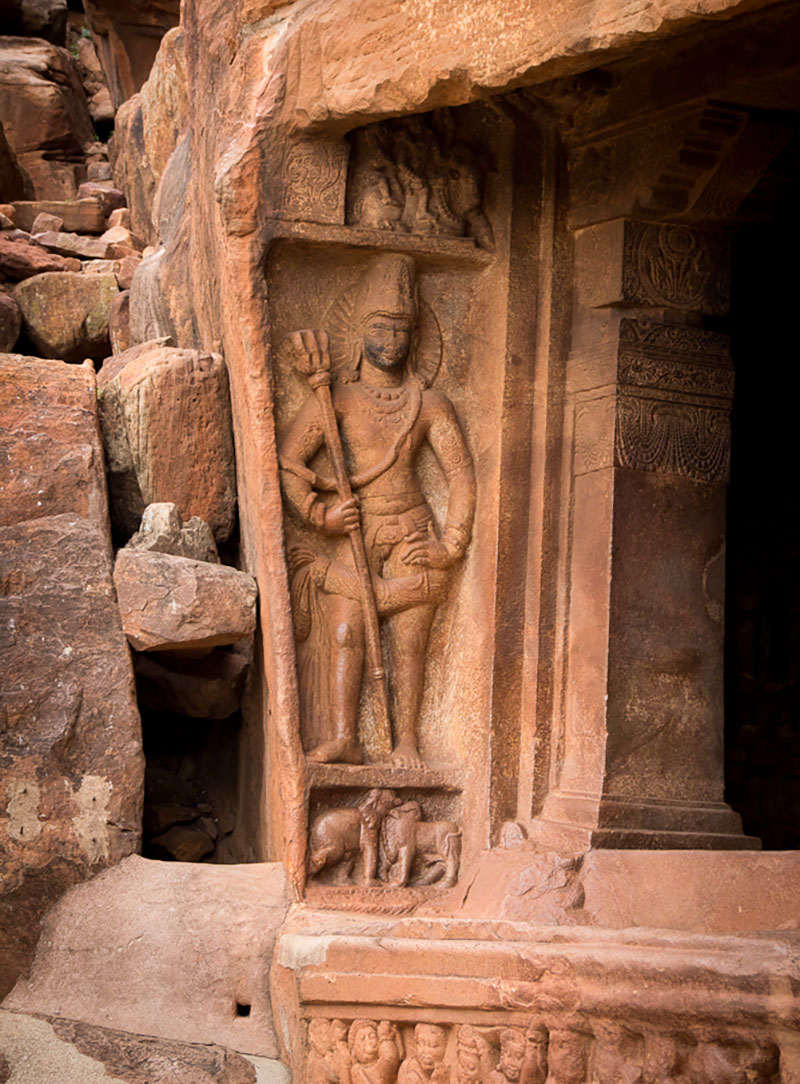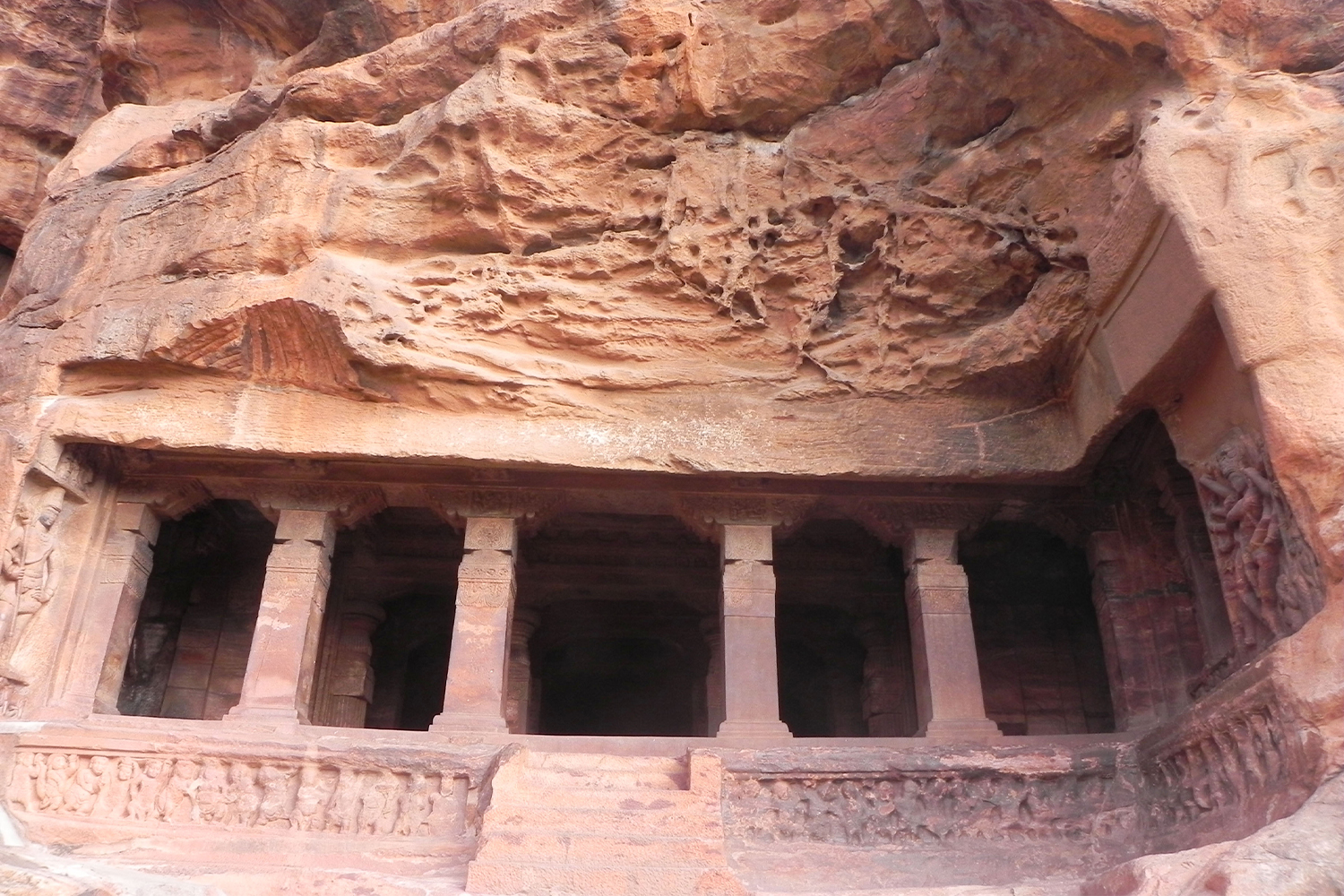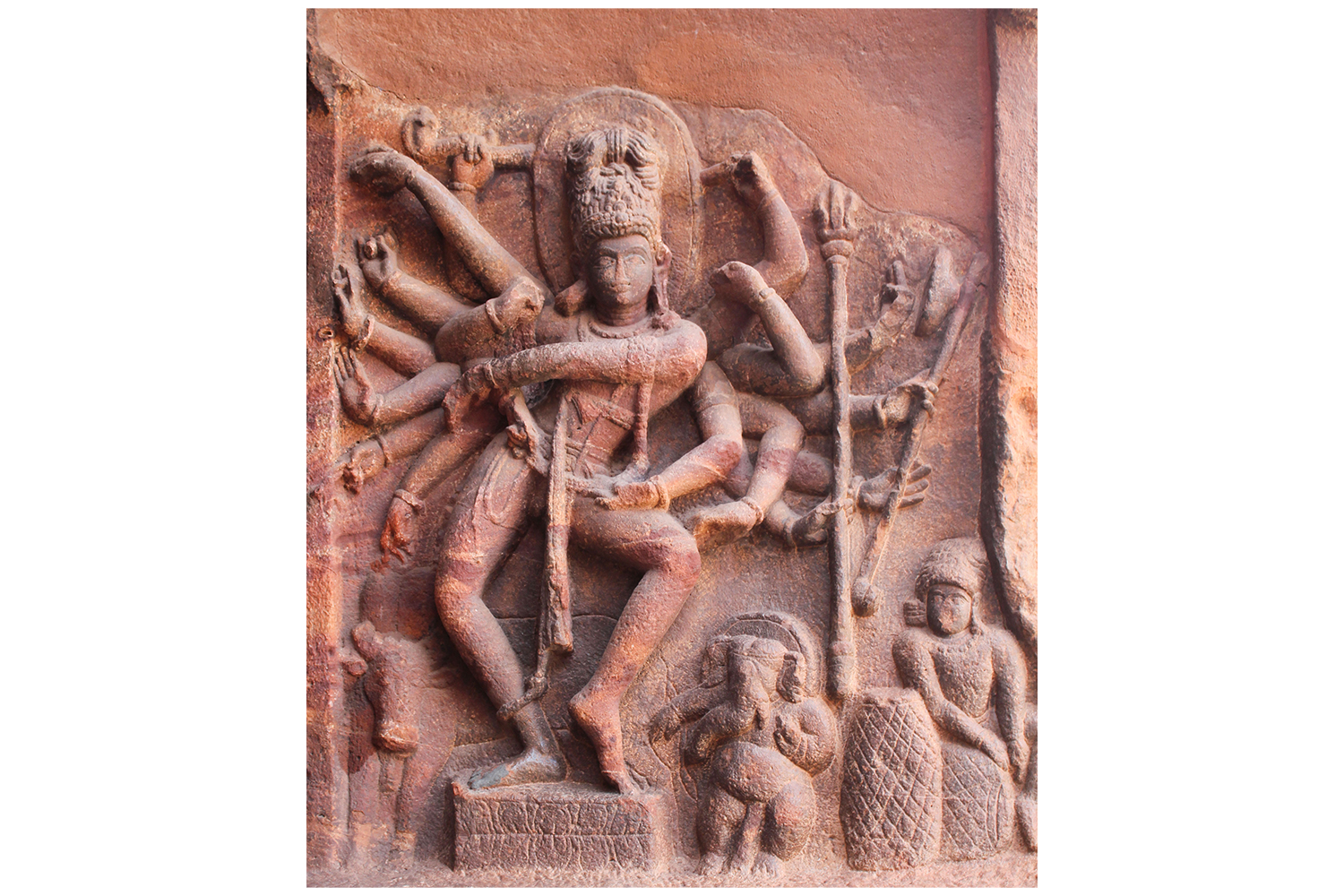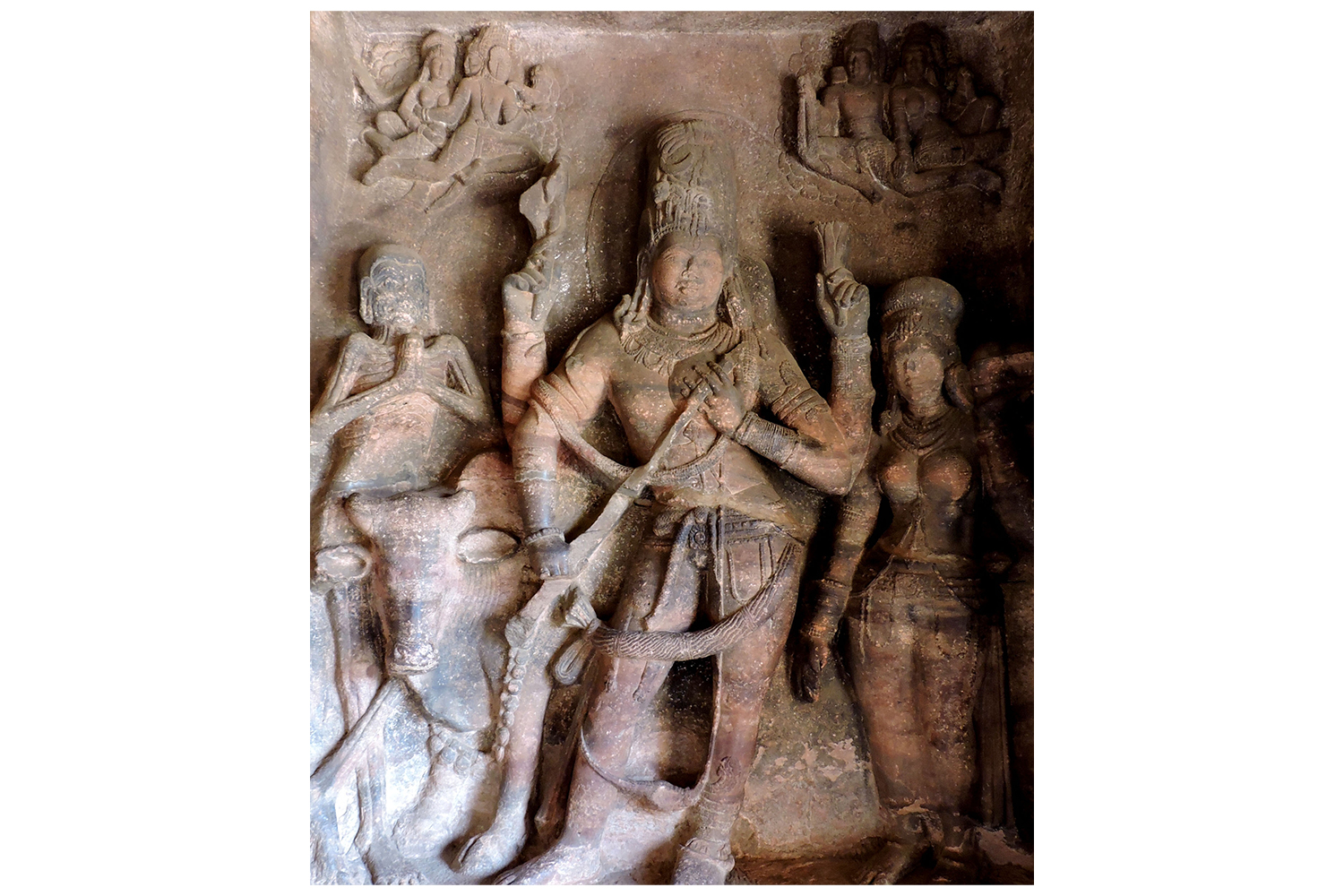Dated to the last quarter of the sixth century CE, Badami Cave 1 is considered among the earliest surviving examples of an early medieval Deccan Shiva shrine with its lingam intact. It is situated at the lowest elevation among the Badami cave temple group, and its architectural and sculptural forms and content suggest that it was the first among them to be excavated. Like the other cave temples at the site, the basic architectural plan of Cave 1 is reminiscent of the chaitya and vihara schemes used in earlier northern Deccan rock-cut caves: it consists of a pillared verandah or mukhamandapa, a pillared hall or sabhamandapa, and an inner sanctum or garbhagriha excavated into the rear wall.
The basement frieze of the porch sill depicts bhutaganas in different moods and extends in an L-shape into a west wing housing a subsidiary shrine. The ganas form an additional band for this subsidiary shrine and populate the dados of the sculptural panels within. Above the frieze, on the jutting flank of the temple, is a large sculptural panel of an eighteen-armed Shiva, identified by some scholars as Nataraja. The god is accompanied by diminutive figures of Nandi, Ganesha and a figure playing the drums. The single-bayed unit with the subsidiary shrine contains a sculpture of Mahishasuramardini accompanied by Kartikeya on its south wall; on its north wall is a relief of Ganesha. The pillars of this bay are mostly plain but for the mouldings, suggesting that this wing may have been a later addition.
On the eastern flank of Cave 1, perpendicular to the pillared front, is a large image of a dvarapala (or sentry) holding a trident. In a smaller panel below is the relief of the bull-elephant composite vrishabha-kunjara; above the guardian figure is another panel depicting Shiva and Parvati seated on Nandi.
Punctuating the screen wall of the mukhamandapa are four pillars and terminal pilasters, the central two of which have round fluted shafts interrupted in the middle by a cuboidal projection and topped with a cushion capital . The terminal walls of the inner verandah bear panels of Harihara, the Shiva-Vishnu composite on the east, and the androgynous Ardhanarishvara with the sage Bhringa on the west. Carved onto the central ceiling slab, facing the sanctum, is a decorative Nagaraja figure offset within a quadrangular frame.
The mukhamandapa is divided into five bays running towards the back wall and garbhagriha, and three bays running across. It features four rows of square-sectioned pillars and two engaged-corner or cantoned pillars. Like the preceding verandah, it has lintels, crosswise figure-brackets, ceiling slabs and, additionally, vyalamukha corbels. The pillars have their own floor sills to delineate the transverse bays. On the floor in the middle bay, in line with the sanctum, is a lotus medallion above which, on the ceiling, is another slightly pendentive lotus medallion.









![The façade of the Maneckji Seth Agiary, a Zoroastrian fire temple, is a standout example of the popularity of the Persian Revival Style in Western India in the 19th and 20th centuries. This style was often seen in the architectural patronage of the Parsis, who emerged as one of the most influential mercantile communities of British India. Popular motifs of this style, like the mythical lamasus (winged bulls with human heads) and the faravahar (a winged guardian spirit in Zoroastrianism), drew on the historical art and architecture of the Achaemenid and Sasanian empires from sites like Persepolis, Bisotun, Taq-e Bostan, Naqsh-e Rostam and Naqsh-e Rajab in Persia.
The Parsi community’s adoption of this style occurred largely due to their networks of global commerce and politics, allowing them to access and translate research of ancient Persia into visible symbols that underlined their association with antiquity, imperial power, and art.
نمای آتشکدهی زرتشتی مانِکجی سِت نمونهی بارزی از رواج سبک «احیای [معماری] ایرانی» در غرب هند طی سدههای نوزدهم و بیستم است. این سبک غالباً در بناهایی دیده میشد که پارسیان، از بانفوذترین جوامع بازرگان در هند بریتانیا، بانیشان بودند. نقشمایههای محبوب این سبک، مانند گاو بالدار اساطیری (لاماسو) و فَروَهَر (روح بالدار نگهبان در دین زرتشت)، برگرفته از هنر و معماری شاهنشاهی هخامنشی و ساسانی، در جاهایی چون تخت جمشید و بیستون و طاق بستان و نقش رستم و نقش رجب، بود.
اقتباس جامعهی پارسیان از این سبک بسیار مرهون روابط گستردهی تجاری و سیاسی آنها بود که دسترس به پژوهشها دربارهی ایران باستان و برگردانیدن آنها به نمادهای بصری را ممکن میکرد و بر پیوند پارسیان با دوران باستان و قدرت شاهنشاهی و هنر تأکید میکرد.](https://mapacademy.io/wp-content/plugins/instagram-feed/img/placeholder.png)
